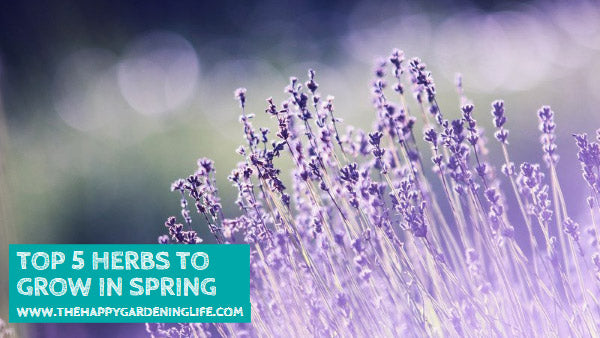
Top 5 Herbs to Grow in Spring
Share
 Herbs are best known for their contribution in spicing up dishes, creating homemade remedies, making medicinal teas, and other kitchen-related purposes. So if you’ve decided to plant some, then check out some of these top herbs to grow in spring!
Herbs are best known for their contribution in spicing up dishes, creating homemade remedies, making medicinal teas, and other kitchen-related purposes. So if you’ve decided to plant some, then check out some of these top herbs to grow in spring!
First off, lavender. Because of its good scent, this herb is widely used in many parts of the world today. It’s not only for cooking and ornamental uses, but also gives physical relief for body pains.
Second on the list is aloe vera. If you love making homemade remedies, then this herbal plant is right for you!
Applying a DIY aloe vera cream can soothe burns and stings. This plant is also simple to grow: just keep it in a sunny location, grow it outdoors in May, and bring it back indoors during October to prevent frost.
Next is the thyme. It’s considered as one of the easiest herbs to grow at home. It’s very useful in adding flavor to dishes, such as soups and stews. So if you want to make your dishes more delicious, then try adding some of your homegrown thyme leaves in them.
For more details about the best herbs for spring gardening, check out the list below and remember to share it on your favorite social networks today!
Best Herbs to Try for Spring Gardening
Lavender
You can use this in cooking, decorating and crafts. It has medicinal uses, too. Lavender’s scent is almost immediately recognizable, and it appeals to men and women equally. Want a restful evening? Put lavender buds or essential oil in your bath water or place a lavender sachet under your pillow. You can’t go wrong with this lovely, wonderful herb.
Aloe Vera
It’s easy to grow if you remember to keep it in a sunny location and protect it from frost. Put the plants outdoors in May and bring them back indoors in October before the first frost of the season. Over the winter months, only water them a few times, and then just a little. When aloe vera is dormant, it needs little or no care beyond protection from the cold. When it’s outdoors in spring and summer, it can usually fend for itself.
Thyme
Thyme is one of those herbs that’s easy to maintain and useful in the kitchen. It can bring added flavor to stews, soups and sauces and will also work well in a wine or citrus marinade. If you dry thyme herbs or make potpourri, thyme dries into an attractive little bundle. There are also specialty thyme varieties with interesting aromas like caraway, lemon and lime.
Rosemary
A premier cooking herb, rosemary is much easier to grow in cold climates than it used to be. You can maintain some of the newer cultivars in zone 5, and if your area is colder than that, you can always make it a commuter herb — outdoors in summer and indoors in winter. If you grill, love lamb (or pork) or take herbs to enhance memory, a patch of rosemary will work wonders in your garden.
Parsley
Although there are quite a few cultivars these days, there are only two basic types of parsley, flat (usually considered best for cooking), and curly (pretty as a garnish but also edible). Parsley can be a confusing plant because it’s biennial. That means it usually has a two-year life cycle and then dies. The first year it produces lots of leaves, and the second year, during spring, it sets seeds, falters and dies.
Once you understand how the process works, it’s pretty easy to cultivate a constant patch of parsley in the garden spring and fall; just plan annual plantings and remember to harvest seeds from last year’s plants. And soak your seeds in very hot water for a day or two before planting them. You’ll get more sprouts that way.
Article Source: theherbgardener.blogspot.com
